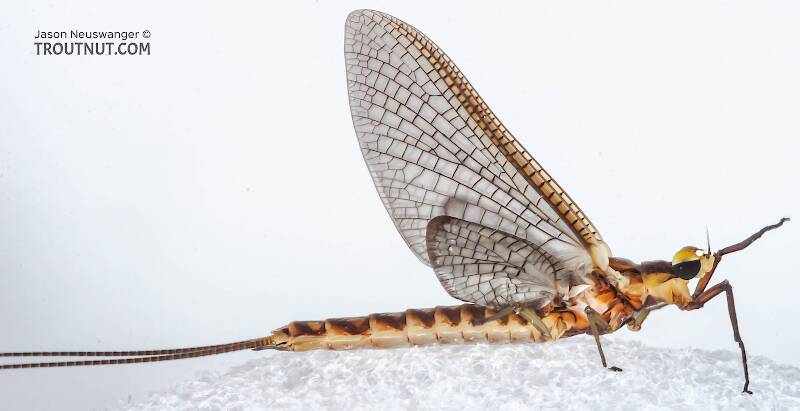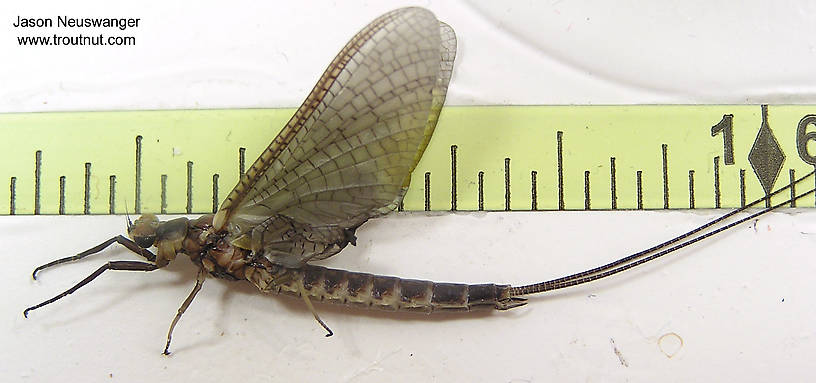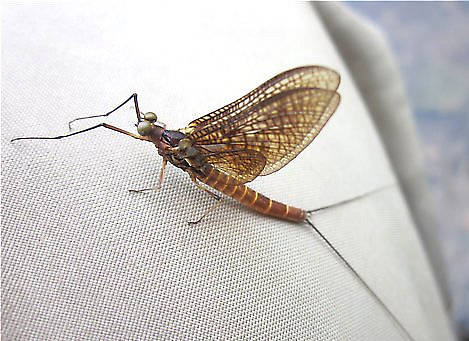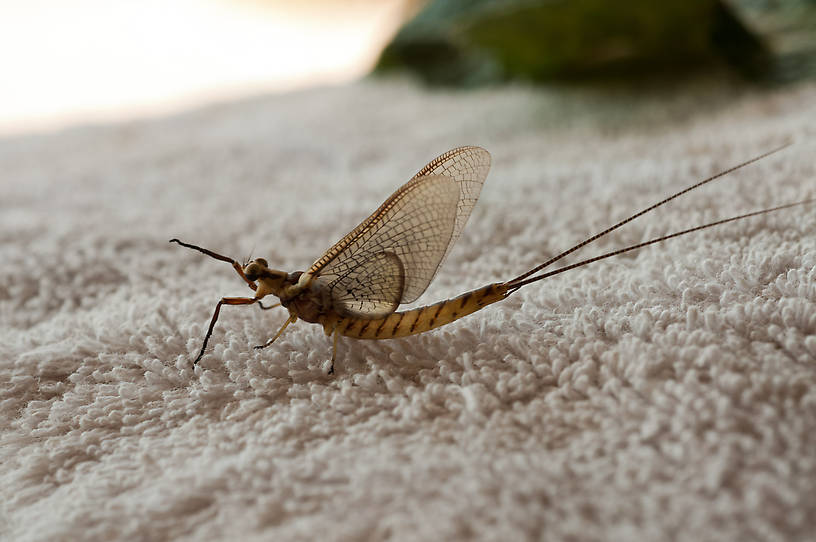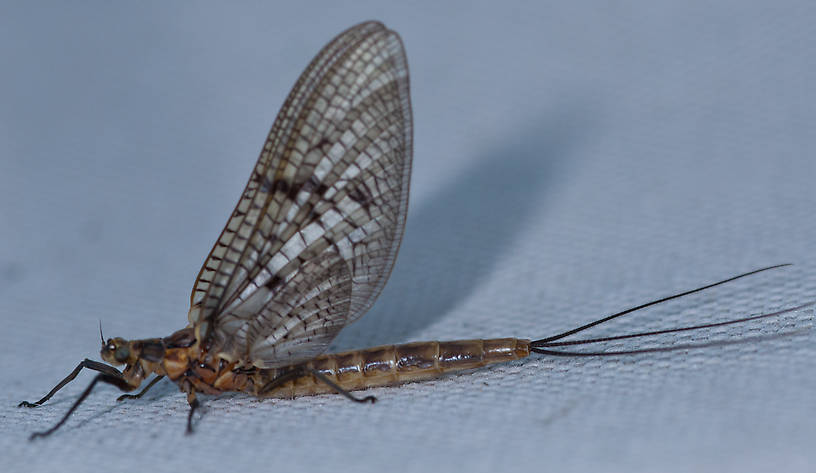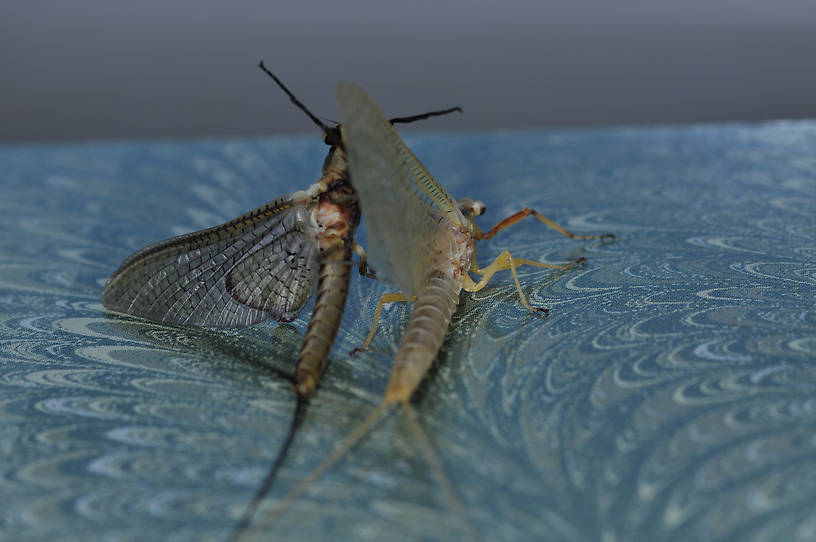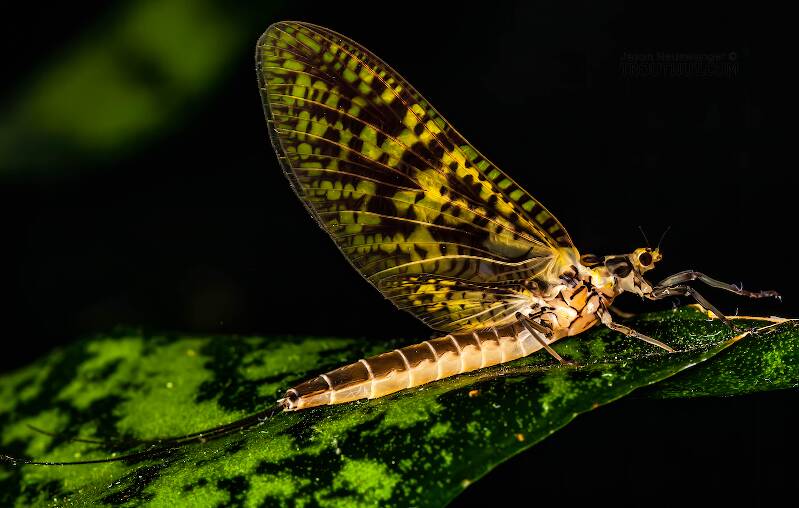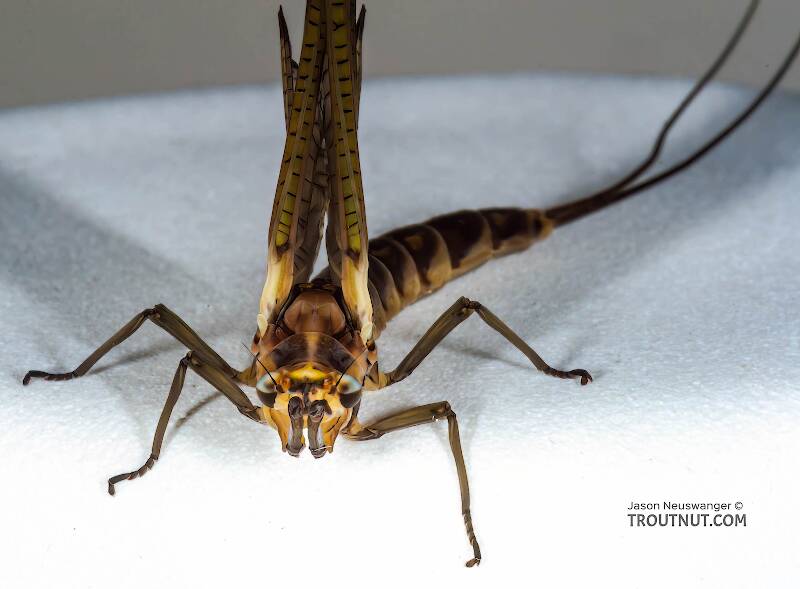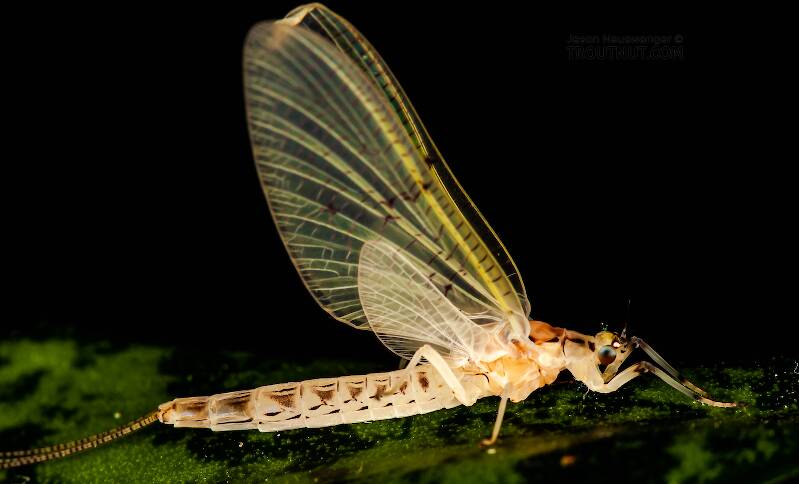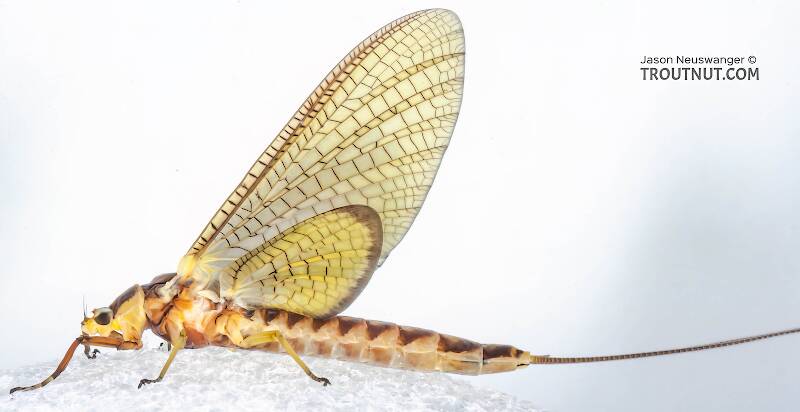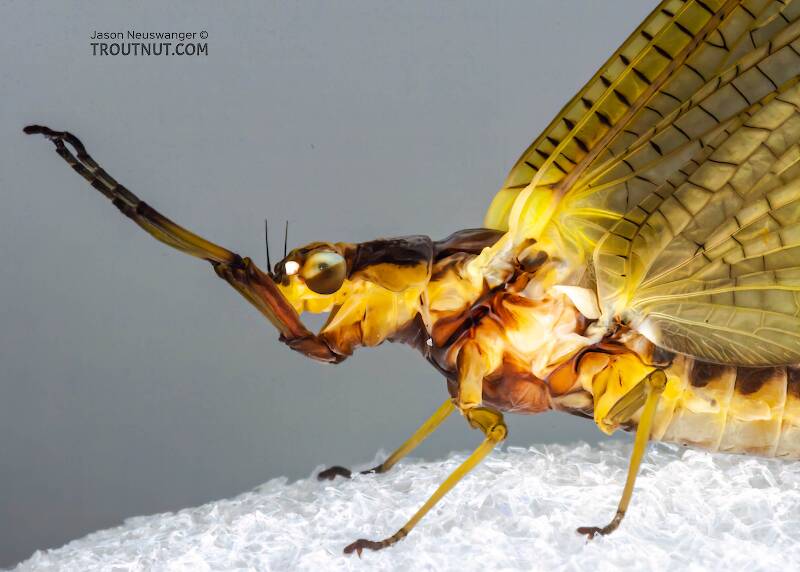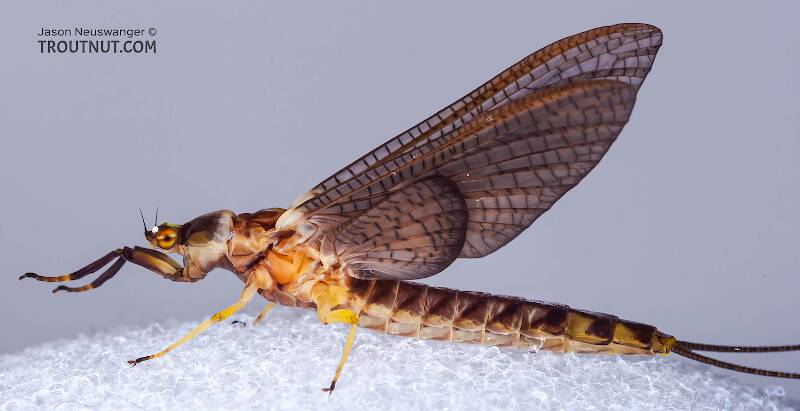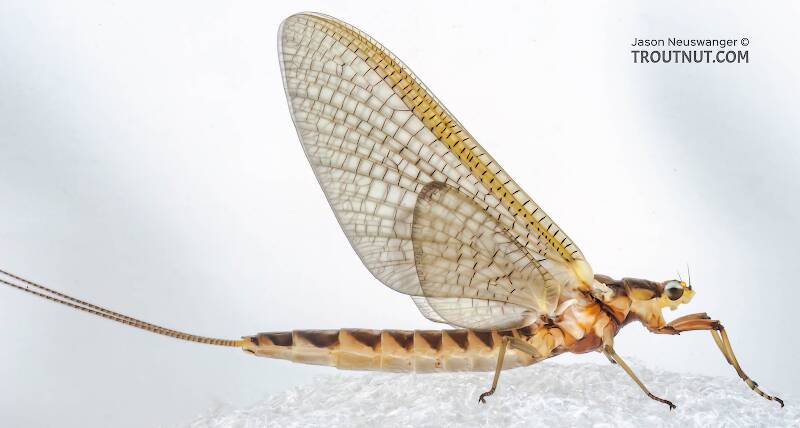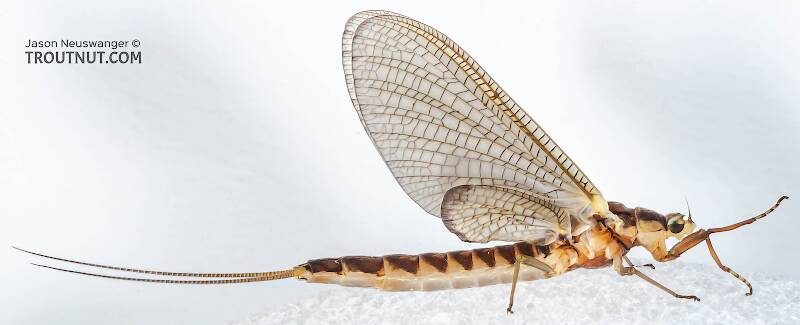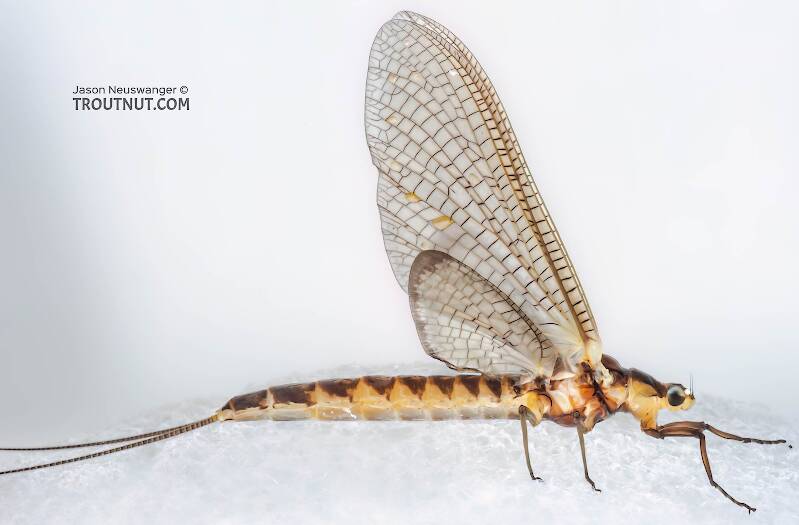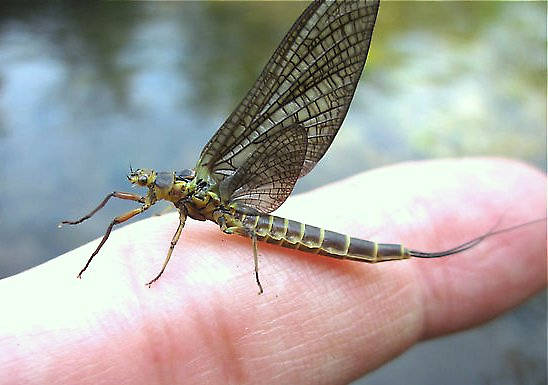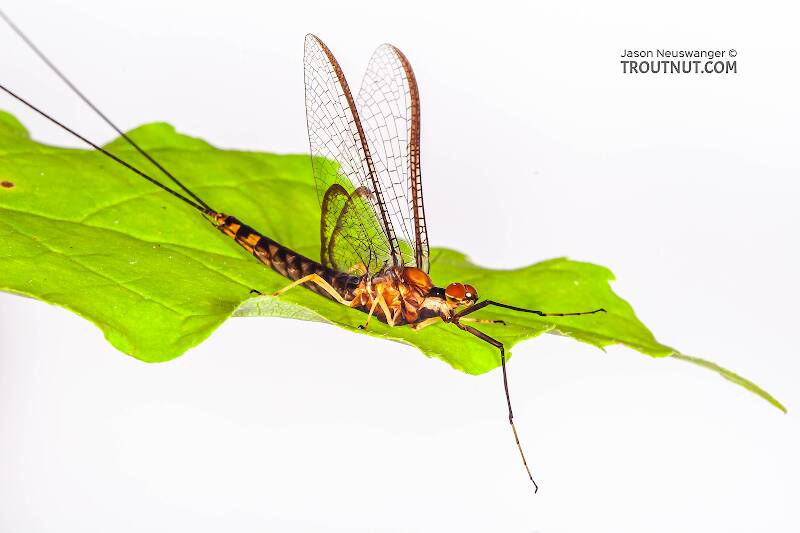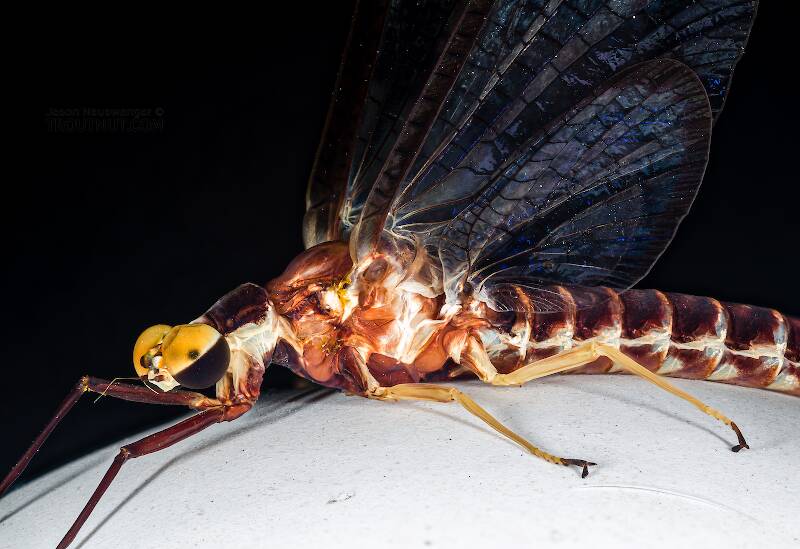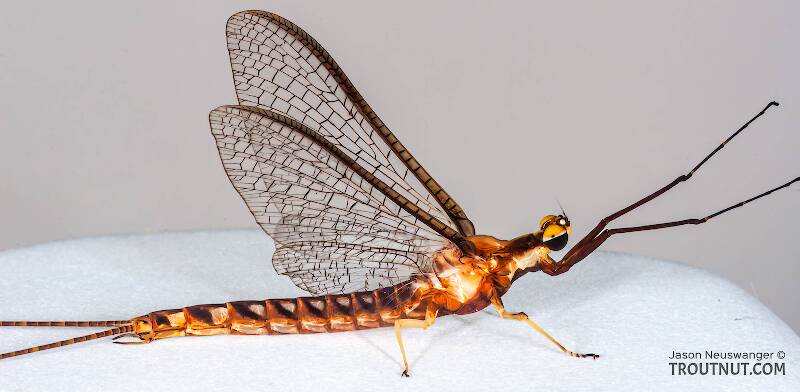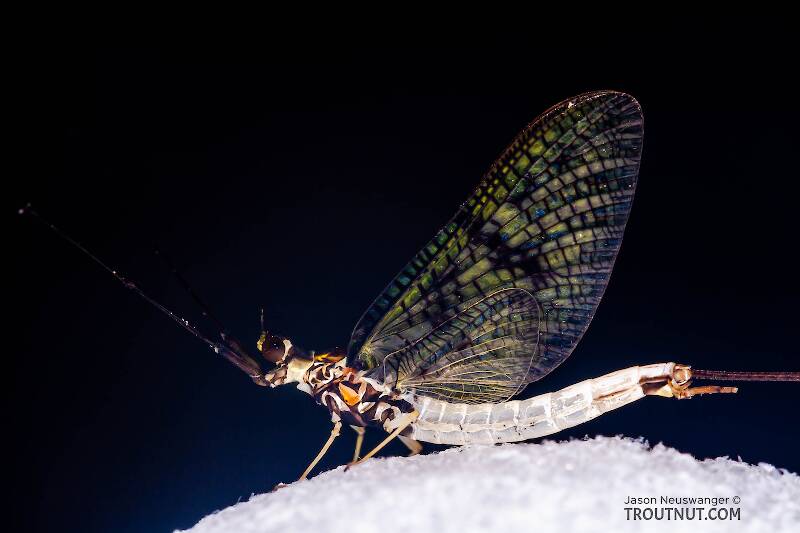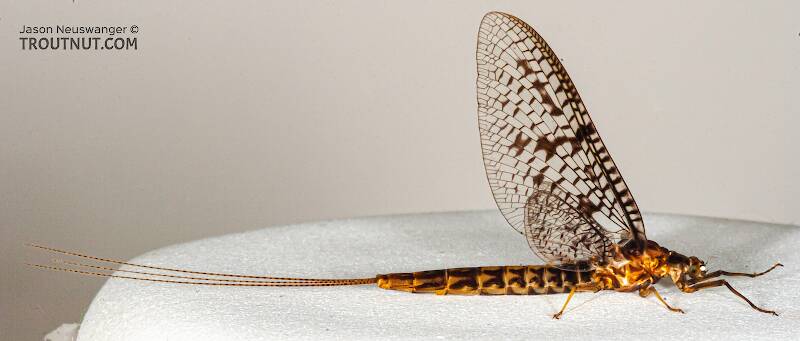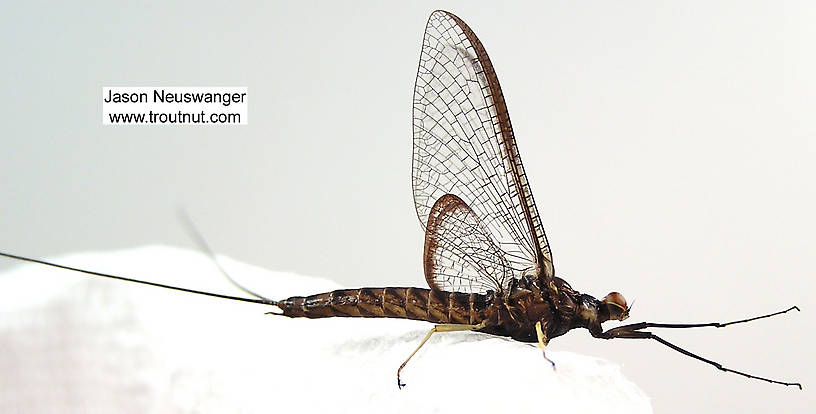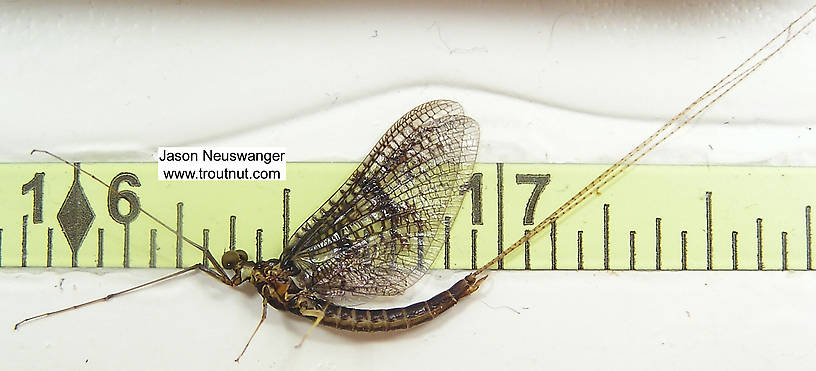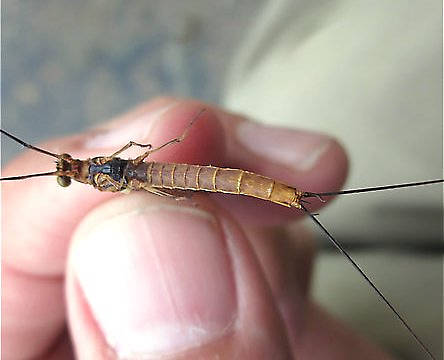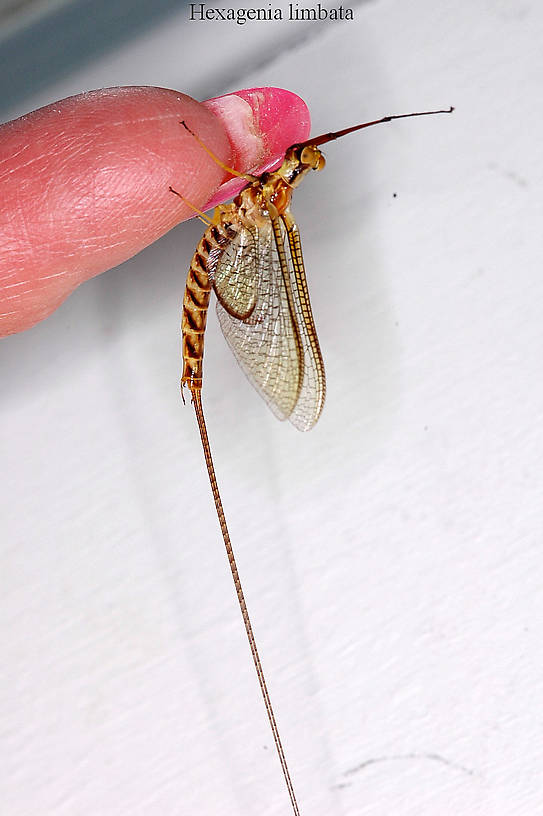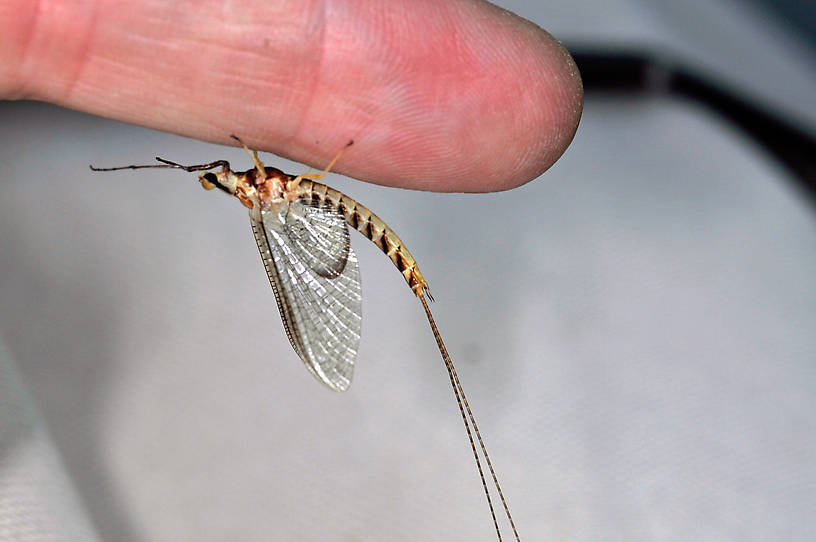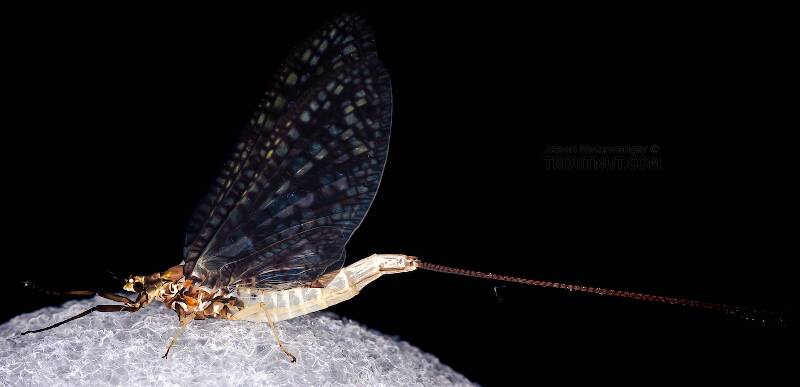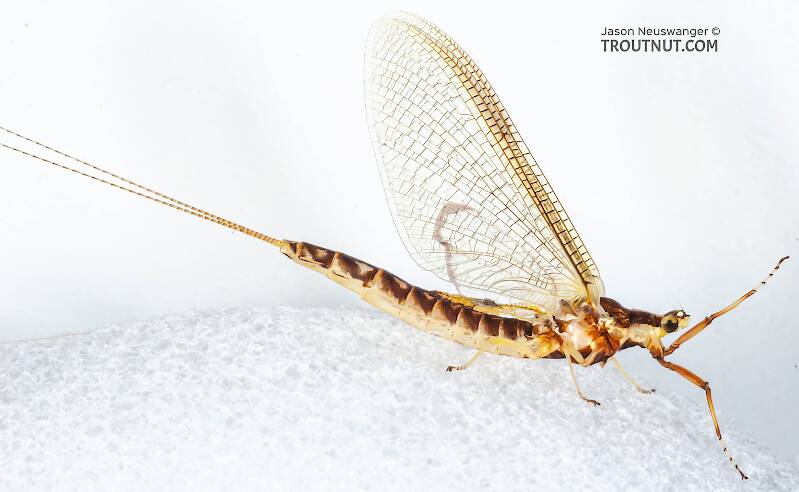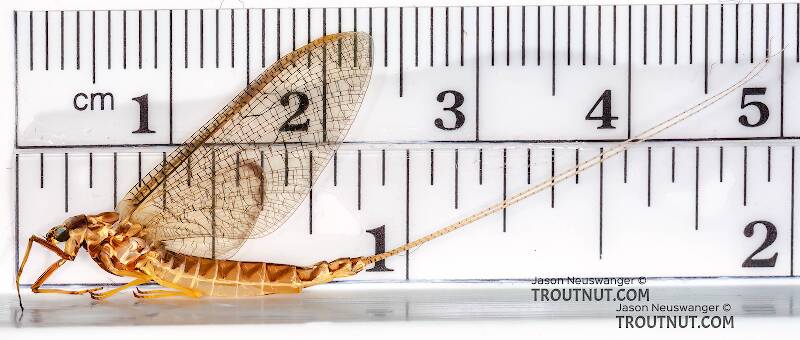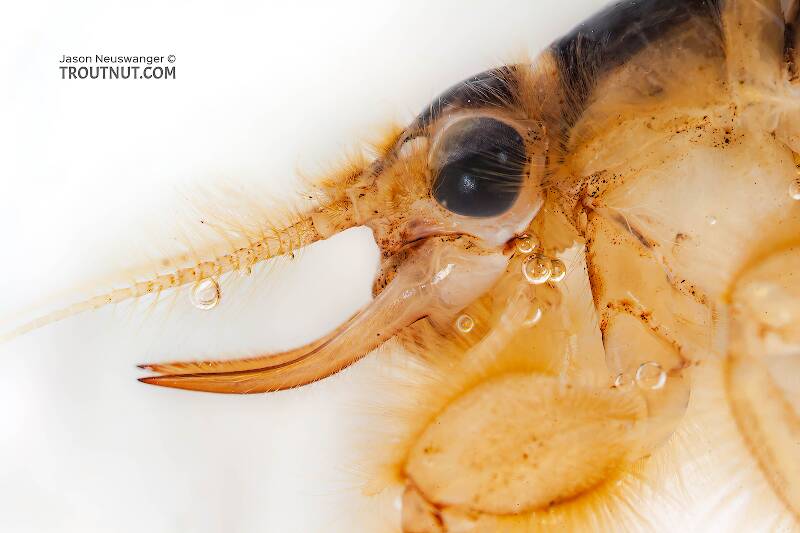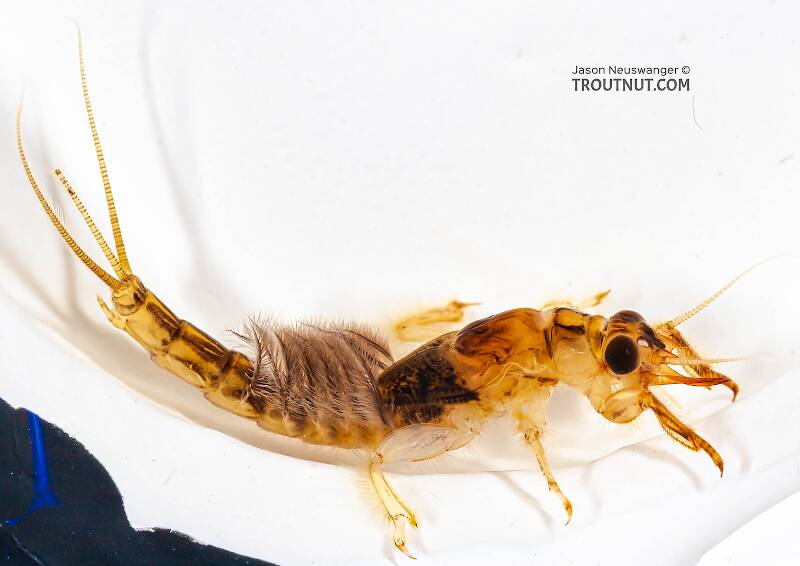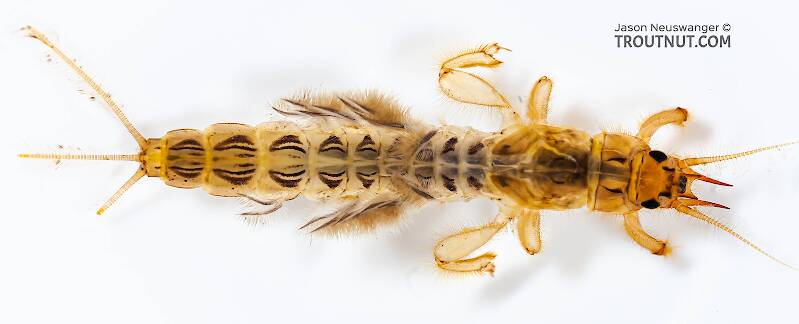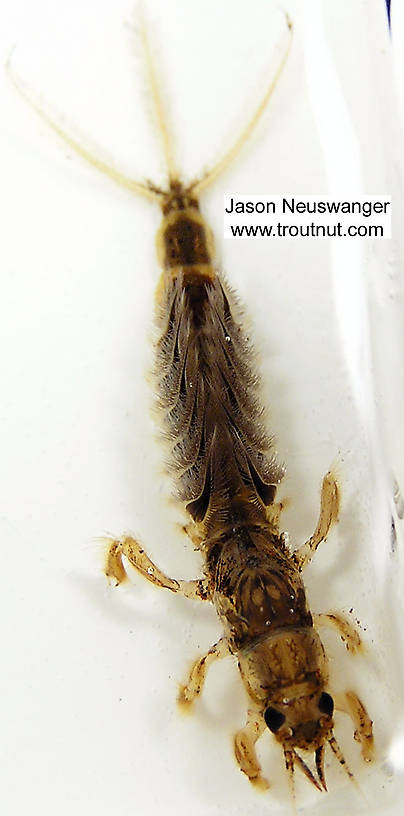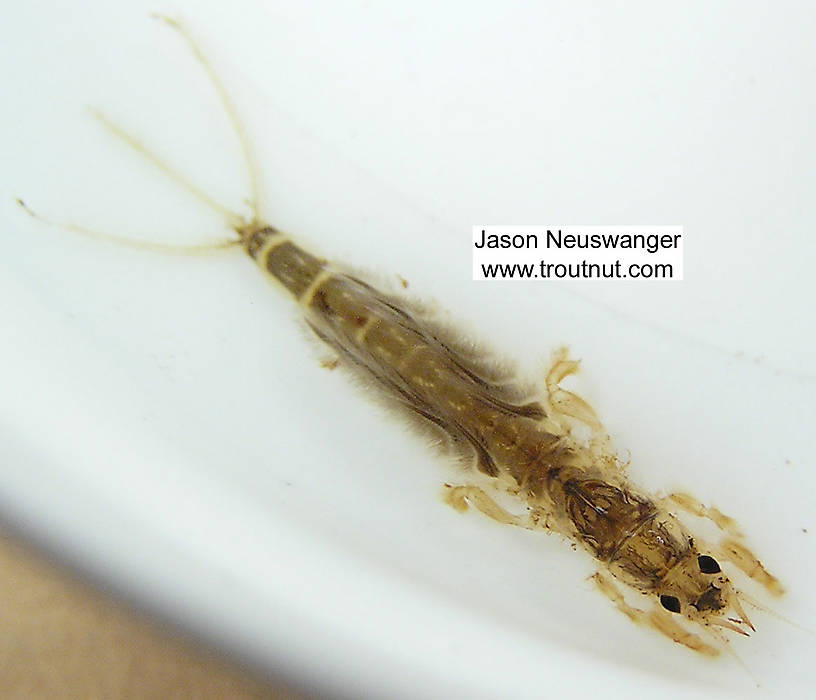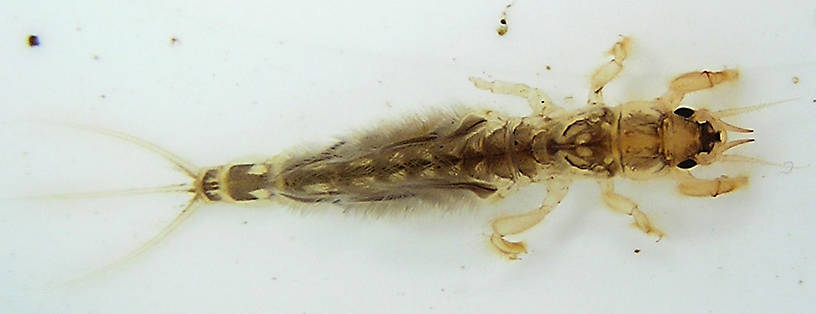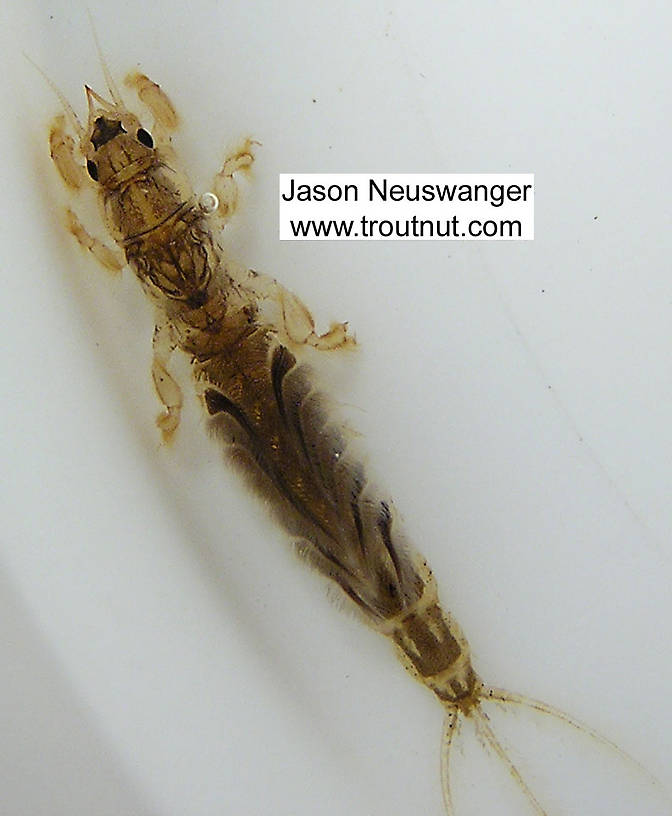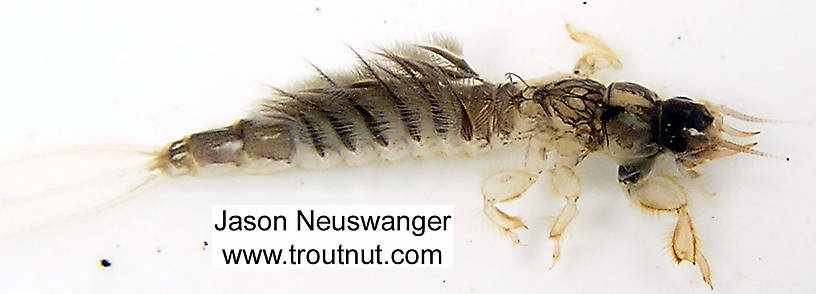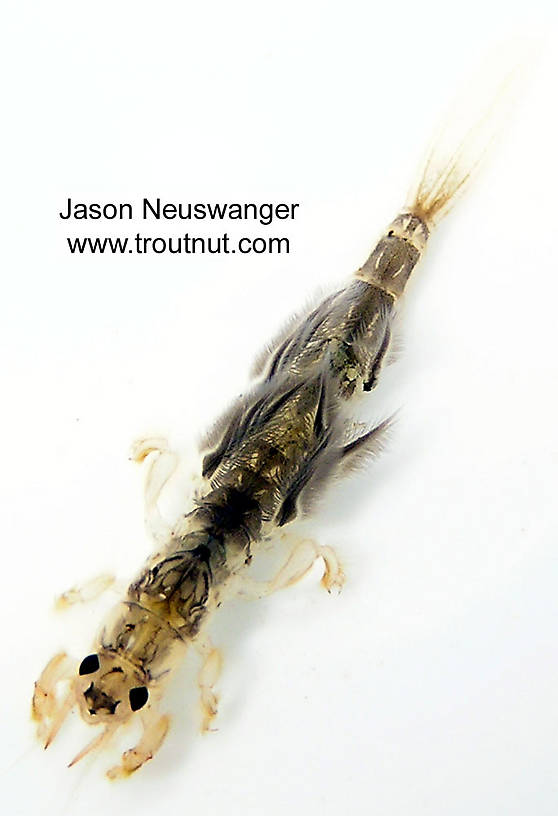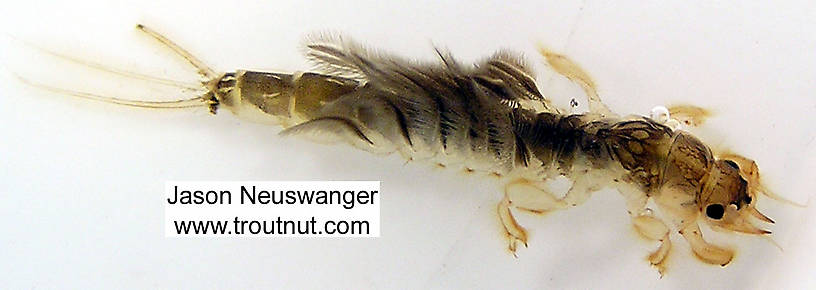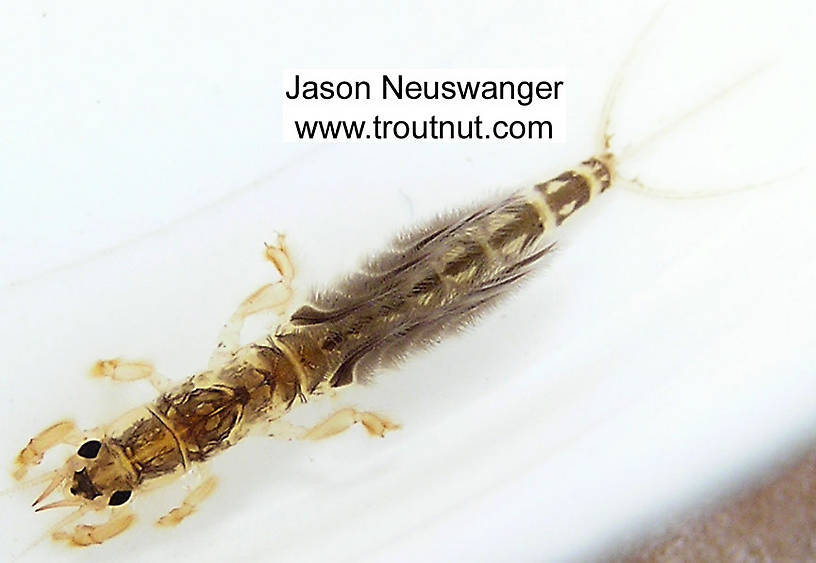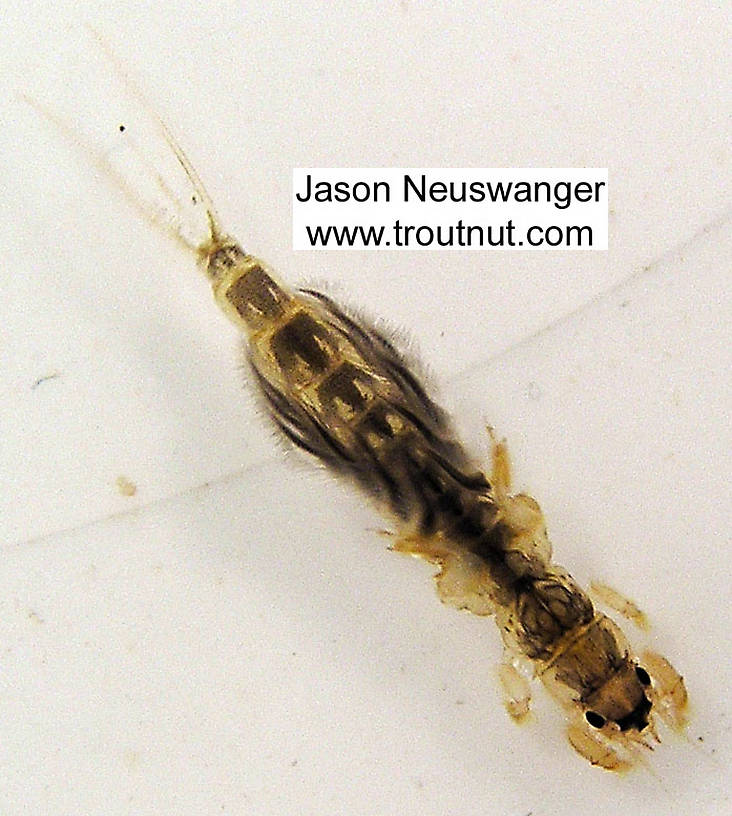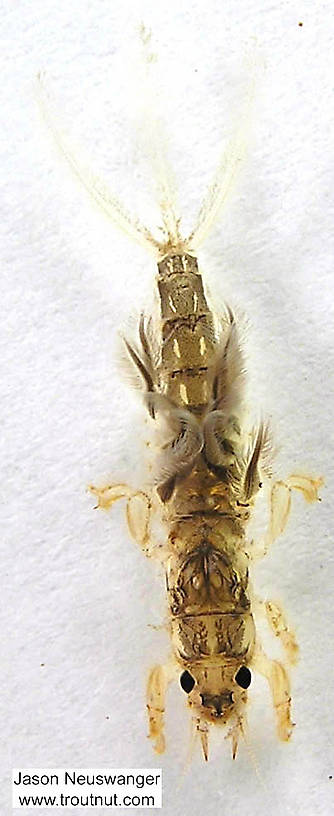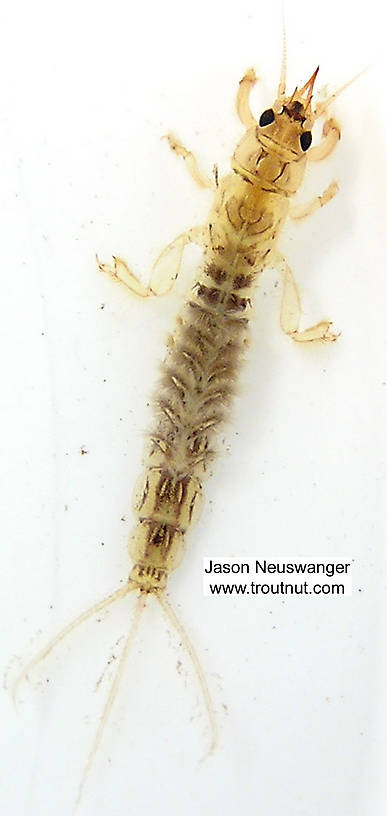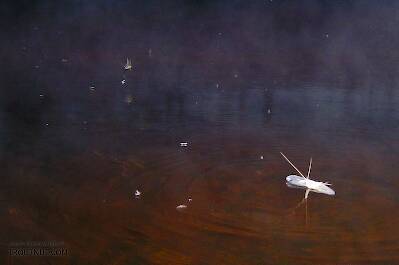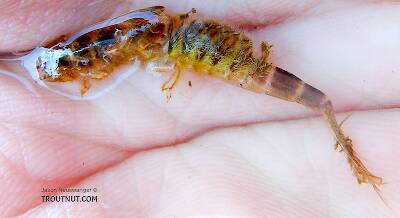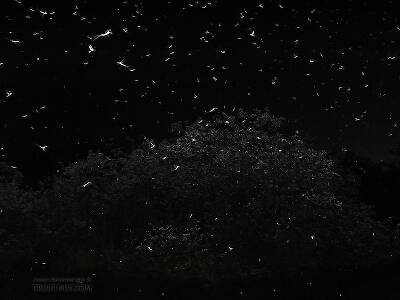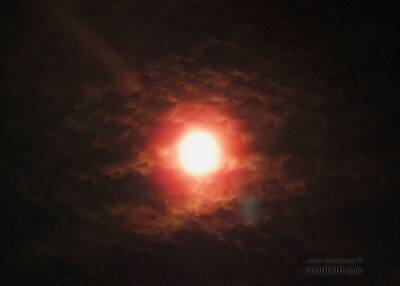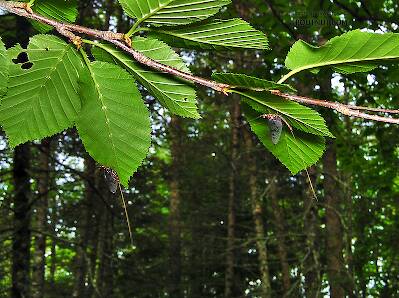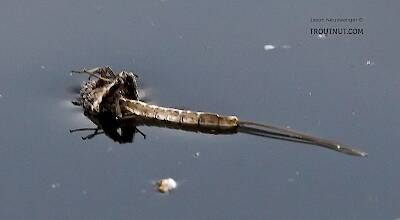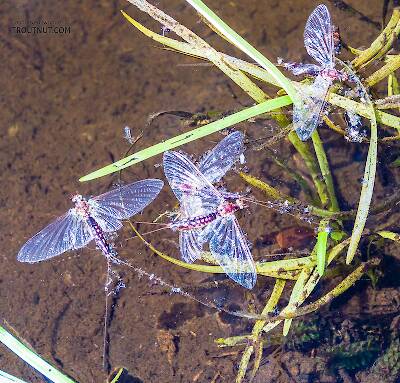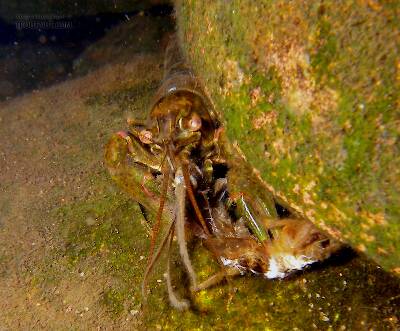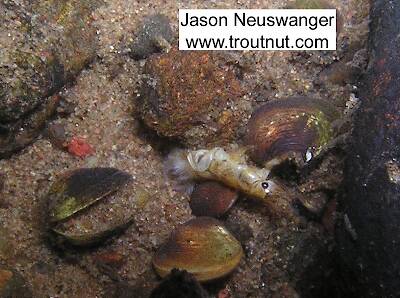
Salmonflies
Pteronarcys californica
The giant Salmonflies of the Western mountains are legendary for their proclivity to elicit consistent dry-fly action and ferocious strikes.
Featured on the forum

This one seems to tentatively key to Holocentropus, although I can't make out the anal spines in Couplet 7 of the Key to Genera of Polycentropodidae Larvae nor the dark bands in Couplet 4 of the Key to Genera of Polycentropodidae Larvae, making me wonder if I went wrong somewhere in keying it out. I don't see where that could have happened, though. It might also be that it's a very immature larva and doesn't possess all the identifying characteristics in the key yet. If Holocentropus is correct, then Holocentropus flavus and Holocentropus interruptus are the two likely possibilities based on range, but I was not able to find a description of their larvae.

Troutnut is a project started in 2003 by salmonid ecologist Jason "Troutnut" Neuswanger to help anglers and
fly tyers unabashedly embrace the entomological side of the sport. Learn more about Troutnut or
support the project for an enhanced experience here.
Mayfly Family Ephemeridae (Hexes and Big Drakes)
Several great superhatches come from this family. The Green, Yellow, and Brown Drakes all belong to the Ephemera genus. Hexagenia and Litobrancha contain the largest mayflies in North America and present legendary fly fishing opportunities, especially the famed "Hex hatch" of Hexagenia limbata.
Family Range
Nymph biology
Nymphs of this family are nocturnal and their pale bodies sensitive to the sunlight. They build U-shaped burrows less than six inches into the stream bottom, where they feed on microorganisms in the fertile sediment. They come out of these burrows to molt up to 30 times throughout their development. They require sediment of a particular density, soft enough for them to dig burrows but hard enough that the burrows don't collapse.It common in this family for nymphs to live 2-3 years before emerging. This is very unusual among mayflies.
Identification
To determine whether a specimen of Ephemeroptera belongs to Ephemeridae, use the Key to Families of Mayfly Nymphs or Key to Families of Mayfly Duns and Spinners.
Specimens of the Mayfly Family Ephemeridae
6 Male Duns
11 Female Duns
10 Male Spinners
4 Female Spinners
15 Nymphs
7 Streamside Pictures of Ephemeridae Mayflies:
3 Underwater Pictures of Ephemeridae Mayflies:
Discussions of Ephemeridae
Hex hatch water temperature range?
4 replies
Posted by NEMatt on May 23, 2014 in the species Hexagenia limbata
Last reply on Jul 5, 2016 by Bombillo
Hi,
New to the site - love it. I was wondering if there was a suggested range of water temperature at which the Hex likes to hatch.
Thanks
Matt
New to the site - love it. I was wondering if there was a suggested range of water temperature at which the Hex likes to hatch.
Thanks
Matt
What is the big DEAL about the HEX?
21 replies
Posted by Spinner on Jun 21, 2006 in the species Hexagenia limbata
Last reply on Jul 5, 2016 by Bombillo
fishing in the dark.......
stepping in holes?
I hate the dark........
I don't need the hex........
Len
stepping in holes?
I hate the dark........
I don't need the hex........
Len
Green Drake Hatch Temp?
1 replies
Posted by NEMatt on May 23, 2014 in the species Ephemera guttulata
Last reply on May 23, 2014 by Entoman
Mayfly larvae -wigglers preservation as bait
20 replies
Posted by Teacherprea on Jun 2, 2007 in the species Hexagenia limbata
Last reply on Apr 29, 2014 by TNEAL
I am a fly fisherman but not a "purist". A friend of mine has a place on the UP of Michigan. He just called me and said a guy told him there is a way to preserve "wigglers." They use them alot up north, those that are not fly fishermen or ladies. They are fishing perch, bluegill and crappie. He heard there is a way to "blanch" them.Drop them in hot water for a few minutes and they turn rubbery. They then will keep indefinitely. Has anyone heard of this? If so, how close to correct is the procedure I mentioned??
Thanks for anyone's help.
Thanks for anyone's help.
GD Shuck
10 replies
Posted by Martinlf on May 29, 2013 in the species Ephemera guttulata
Last reply on Jun 2, 2013 by Crepuscular
Jason's photo of a GD shuck suggests that at hatch time the backs of the nymphs may be a greyish or grey olive color. Possibly useful information, if this is an accurate surmise.
Start a Discussion of Ephemeridae
References
- Arbona, Fred Jr. 1989. Mayflies, the Angler, and the Trout. Nick Lyons Books.


